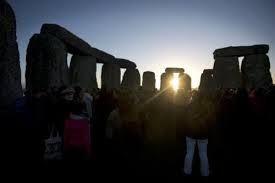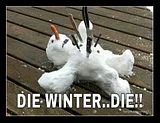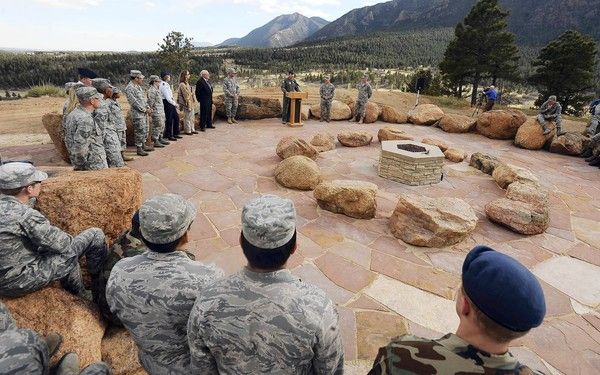The wheel of the seasons keep turning.
All around the house tonight there are candles lit. There is a warm fire in the fireplace in the family room and, despite the cold wind and occasional snow shower, there is a blazing fire in the backyard fire pit. Each winter is different, this one like the last has been warm until last week when it seemed Mother Nature was having her way with us and sent a blast of Arctic cold. Once again, I look forward to the early signs of spring, no different from last year with tips of early spring flowers ready poking up, getting ready to add a happy splash color to the dark mulch. The Winter is shorter and milder than the ones just 10 years ago. According the NOAA, they are.
The winter of 2011, we were snowed in here in NYC with a six foot wall of snow down the drive way and along the side walk. It a way the mild winter has been a blessing for the victims of Hurricane Sandy who are still without heat and struggling to rebuild their homes and lives.
I can’t say I miss the snow, I don’t, but I know this is not a good sign for our dear Earth, our home.
I read this great post on the Days of Imbolc from Beth Owl’s Daughter that I would like to share:
The Sun’s path has returned to where it was at Samhain. Take some time to notice the quality of the light, for it is the same now as that shimmering magical glow of late October. But instead of the season of dark and silence before us, in the Northern Hemisphere, the season of light and growth lies ahead.
And so we prepare ourselves with rites of renewal, cleansing, and commitment. We celebrate the first stirrings of Spring.
The days are noticeably longer, and life awakens all around us. While some of the fiercest Winter weather may still lie ahead, listen! The birds are already beginning their courtships.
Look – cold-hardy sprouts are poking from the earth, and the first lambs are being born (hence the name Imbolc, which means “ewe’s milk,” referring to the nursing mothers). For our ancestors not so long ago, having lived on only the stored food of Winter, the first fresh milk returning was a tremendous blessing, often meaning the difference between survival or death.
h/t Hecatedemeter
Reposted from January 31, 2011
 Although you’d never know it if you looked out your window here in the Northeast and throughout a good part of the northern hemisphere, we are nearing the midpoint between winter solstice and the vernal equinox. The Sun is noticeably rising earlier and setting later. It is a pleasure to take my early morning shower in daylight and start dinner preparation with daylight still illuminating the kitchen. There are seed catalogs arriving in the mail which has me contemplating the flower beds, the herb garden and maybe this year some vegetables.
Although you’d never know it if you looked out your window here in the Northeast and throughout a good part of the northern hemisphere, we are nearing the midpoint between winter solstice and the vernal equinox. The Sun is noticeably rising earlier and setting later. It is a pleasure to take my early morning shower in daylight and start dinner preparation with daylight still illuminating the kitchen. There are seed catalogs arriving in the mail which has me contemplating the flower beds, the herb garden and maybe this year some vegetables.
In the traditions of Pagan and Wiccan religions, we celebrate this changing season as Imbolc, or Candlemas, which begins on January 31st, February Eve, and ends on February 2nd, a time of rebirth and healing. Imbolc is one of the eight Wiccan Sabbats of the Wheel of the Year, one of the four cross-quarter fire festivals. Brighid, the patroness of poetry and healing, is the Pagan Goddess associated with Imbolc.
Some of the traditions are the lighting of fires, decorating with red and white symbolizing the snow and the rising sun and green for new growth. Candles are lit in all the rooms of the house. Fires places and hearths are cleaned out of ashes and fires are lit. Since there is still snow drifts in my backyard, the fireplace will be just fine.
 The symbols are ewes and lambs since Imbolc is derived from a Celtic word, “oimelc”, meaning ewe’s milk. Many of the foods that are serves are lamb, cheese, poppyseed muffins, cakes and breads. Dishes are seasoned with bay leaves and dried basil.
The symbols are ewes and lambs since Imbolc is derived from a Celtic word, “oimelc”, meaning ewe’s milk. Many of the foods that are serves are lamb, cheese, poppyseed muffins, cakes and breads. Dishes are seasoned with bay leaves and dried basil.
In rural places where farming is still a way of life, ploughs are decorated with flowers and then doused with whiskey. I know most of us have better things to do with whiskey. Sometimes the plough is dragged from door to door by costumed children asking for food and money, a kind of wintry “trick or treat”. Some traditional gifts, if your going to a friends house to celebrate, are garden tools, seeds and bulbs.
The Maiden is also honored as the “Bride” on this Sabbat. Straw corn dollies are created from oat or wheat straw and placed in baskets with white flower bedding. The older women make special acorn wands for the dollies to hold. The wands are sometimes burned in the fireplace and in the morning, the ashes in the hearth are examined to see if the magic wands left marks as a good omen. A new corn broom is place by the front door to symbolize sweeping out the old and welcoming the new.
 Non-Pagans celebrate February 2nd as Ground Hog’s Day, a day to predict the coming weather, telling us that if the Groundhog sees his shadow, there will be ‘six more weeks’ of bad weather. It actually has ancient roots, weather divination was common to Imbolc, and the weather of early February was long held to be a harbinger of spring. On Imbolc, the crone Cailleach‘s grip of winter begins to loosen. She goes forth in search of kindling so that she may keep her fires burning and extend the winter a little longer. If Imbolc is rainy and cloudy, she will find nothing but twigs unsuitable for burning and will be unable to prolong the winter. If the day is dry and kindling is abundant, she will have plenty of fuel to feed her fire and prolong the cold of winter. Spring will be very far away. As an old British rhyme tells us that, “If Candlemas Day be bright and clear, there’ll be two winters in the year.”
Non-Pagans celebrate February 2nd as Ground Hog’s Day, a day to predict the coming weather, telling us that if the Groundhog sees his shadow, there will be ‘six more weeks’ of bad weather. It actually has ancient roots, weather divination was common to Imbolc, and the weather of early February was long held to be a harbinger of spring. On Imbolc, the crone Cailleach‘s grip of winter begins to loosen. She goes forth in search of kindling so that she may keep her fires burning and extend the winter a little longer. If Imbolc is rainy and cloudy, she will find nothing but twigs unsuitable for burning and will be unable to prolong the winter. If the day is dry and kindling is abundant, she will have plenty of fuel to feed her fire and prolong the cold of winter. Spring will be very far away. As an old British rhyme tells us that, “If Candlemas Day be bright and clear, there’ll be two winters in the year.”
Whatever you celebrate or believe, let us all hope that that the local groundhog doesn’t see his shadow and there is only one winter this year. I have nowhere else to pile the snow.
Blessed Be.
 The shortest day, the longest night, for those of us who reside in the Northern climes Winter Solstice is here. The sun reaches is most Southern destiny and touches for but a moment, the Tropic of Capricorn and immediately reverses her course. That moment will occur on Dec. 21 at 6:03 p.m. EST.
The shortest day, the longest night, for those of us who reside in the Northern climes Winter Solstice is here. The sun reaches is most Southern destiny and touches for but a moment, the Tropic of Capricorn and immediately reverses her course. That moment will occur on Dec. 21 at 6:03 p.m. EST. 

 By now just about everyone is done with this Winter which began with a late Autumn snow storm in early December and quickly evolved in Arctic cold with multiple snow and ice storms. It still feels like the winter that just will not die in most of the country. Take heart, my Winter weary friends,
By now just about everyone is done with this Winter which began with a late Autumn snow storm in early December and quickly evolved in Arctic cold with multiple snow and ice storms. It still feels like the winter that just will not die in most of the country. Take heart, my Winter weary friends,  The wheel has turned another eighth and we are halfway to Spring. Imbolc is the Celtic season that marks the beginning of lambing season, the stirring of life and lengthening of the day. It’s a time to clear out the cobwebs, sweep the hearth and get ready for beginning of the growing season. The holiday also honors Brigid, the Goddess of fire, so the celebration is marked by lighting candles all round the house and a fire in the fire pit, if you have one. Others symbols of the holiday are the snowdrop, the first gift of spring and the swan, The swan mates for life and represents loyalty, fidelity and faithfulness.
The wheel has turned another eighth and we are halfway to Spring. Imbolc is the Celtic season that marks the beginning of lambing season, the stirring of life and lengthening of the day. It’s a time to clear out the cobwebs, sweep the hearth and get ready for beginning of the growing season. The holiday also honors Brigid, the Goddess of fire, so the celebration is marked by lighting candles all round the house and a fire in the fire pit, if you have one. Others symbols of the holiday are the snowdrop, the first gift of spring and the swan, The swan mates for life and represents loyalty, fidelity and faithfulness.  In rural places where farming is still a way of life, ploughs are decorated with flowers and then doused with whiskey. I know most of us have better things to do with whiskey. Sometimes the plough is dragged from door to door by costumed children asking for food and money, a kind of wintry “trick or treat”. Some traditional gifts, if your going to a friends house to celebrate, are garden tools, seeds and bulbs.
In rural places where farming is still a way of life, ploughs are decorated with flowers and then doused with whiskey. I know most of us have better things to do with whiskey. Sometimes the plough is dragged from door to door by costumed children asking for food and money, a kind of wintry “trick or treat”. Some traditional gifts, if your going to a friends house to celebrate, are garden tools, seeds and bulbs. Non-Pagans celebrate February 2nd as Ground Hog’s Day, a day to predict the coming weather, telling us that if the Groundhog sees his shadow, there will be ‘six more weeks’ of bad weather. It actually has ancient roots, weather divination was common to Imbolc, and the weather of early February was long held to be a harbinger of spring. On Imbolc, the crone
Non-Pagans celebrate February 2nd as Ground Hog’s Day, a day to predict the coming weather, telling us that if the Groundhog sees his shadow, there will be ‘six more weeks’ of bad weather. It actually has ancient roots, weather divination was common to Imbolc, and the weather of early February was long held to be a harbinger of spring. On Imbolc, the crone  The shortest day, the longest night, for those of us who reside in the Northern climes
The shortest day, the longest night, for those of us who reside in the Northern climes 
 Although you’d never know it if you looked out your window here in the Northeast and throughout a good part of the northern hemisphere, we are nearing the midpoint between winter solstice and the vernal equinox. The Sun is noticeably rising earlier and setting later. It is a pleasure to take my early morning shower in daylight and start dinner preparation with daylight still illuminating the kitchen. There are seed catalogs arriving in the mail which has me contemplating the flower beds, the herb garden and maybe this year some vegetables.
Although you’d never know it if you looked out your window here in the Northeast and throughout a good part of the northern hemisphere, we are nearing the midpoint between winter solstice and the vernal equinox. The Sun is noticeably rising earlier and setting later. It is a pleasure to take my early morning shower in daylight and start dinner preparation with daylight still illuminating the kitchen. There are seed catalogs arriving in the mail which has me contemplating the flower beds, the herb garden and maybe this year some vegetables. 

 Tonight, when the Beltane fires are lit, there will be some sadness in out hearts. A good man, and one of my favorite DFH activists,
Tonight, when the Beltane fires are lit, there will be some sadness in out hearts. A good man, and one of my favorite DFH activists,